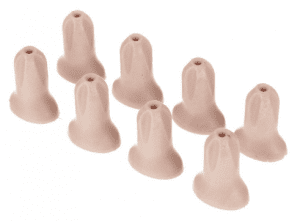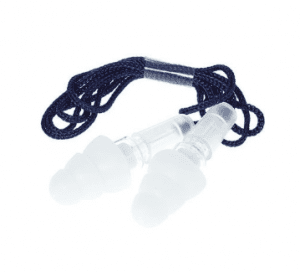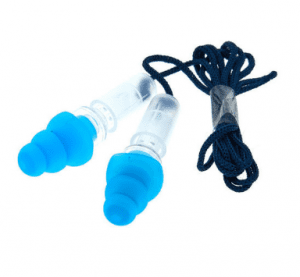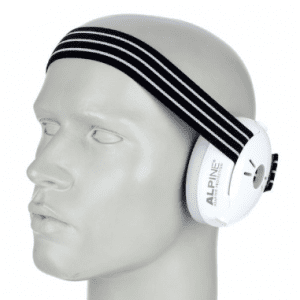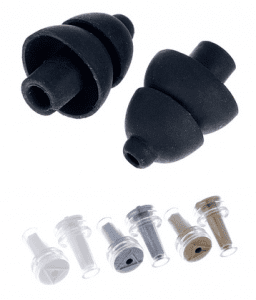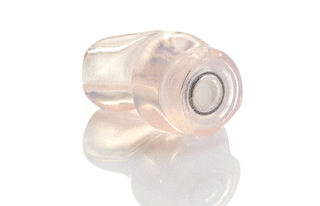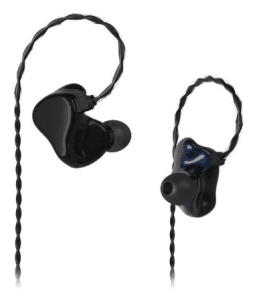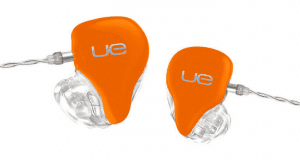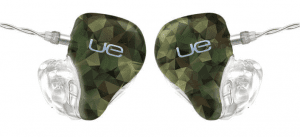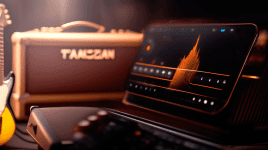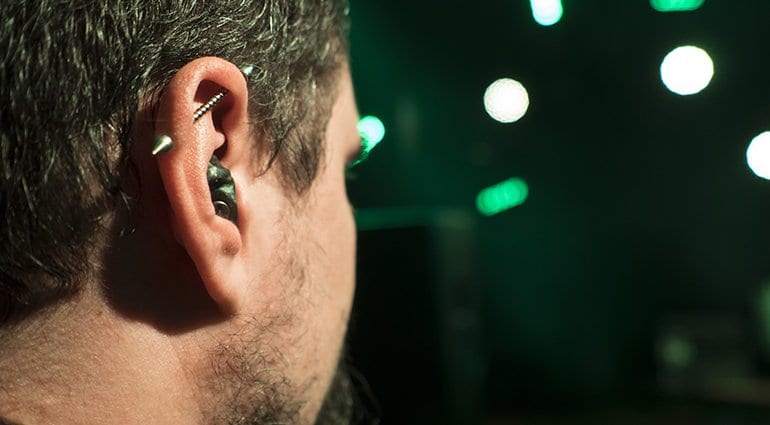
It is essential and basic knowledge that our ears must be protected from too much volume, especially when they are irreplaceable for our profession and our passion, music. There is a high risk of tinnitus – a sudden loss of hearing capacity – among musicians and sound engineers or, in the worst case, permanent loss of hearing. The most effective remedy for this is rest for the ear but there is no guarantee that damaged ear drums will repair themselves. We highly recommend suitable hearing protection for all loud situations and this includes you, our fellow musicians.
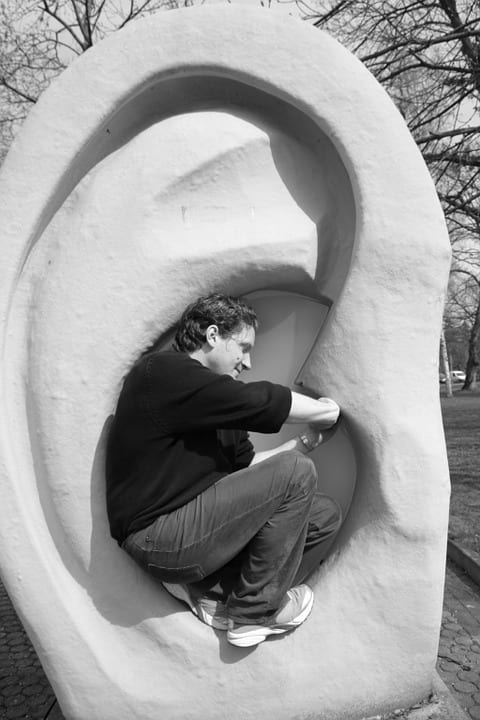
The subject of hearing and making music, however, is highly emotional, because even the slightest changes in our hearing affect the feeling for the timbre and tones of our songs. That’s why we have fears like “Will I still be able to control my sounds as well with hearing protection in?
When it comes to hearing protection, there is no single solution, it is very specific to each case. Singers eventually find out for themselves what the golden mean is between optimal hearing when making music and optimal protection of their ears. We are relieved by the fact that hearing protection technology has developed a lot in recent years, so that a balanced sound image can still be maintained at reduced volume. Remember this rule: The best protection is the one we use regularly, no matter what the method or format.
To give you an overview of the different possibilities of hearing protection, we’ll introduce you to the differences and possibilities of standard and customised / fitted hearing protection and explain why even in-ear headphones or monitors can protect our ears from too much volume.
Non-fitted ear plugs
Non-fitted ear plugs consist of soft material, in the standard version. They come in malleable and not malleable varieties, and the most common example are the famous yellow foam plugs from the pharmacy. Although they make everything quieter, they don’t sound good because they distort the sound and cut away the treble, which is extremely counterproductive (even dangerous) for singers. If we don’t hear highs, we try to sing louder by forcing, and therefore straining, our vocal chords.
- UVEX HiCom Festival Earplugs
- Elacin ER20
- Elacin ER20s
Over-the-ear Headphones
For blocking the maximum amount of decibels, for young children and loud drummers, there are the over-the-ear “headphone” / “Micky Mouse” types of protection.
Non-fitted earplugs with a filter
What’s slightly better than non-fitted earplugs is non-fitted earplugs with a filter (for example the Alpine Music Safe Pro). They feel slightly more comfortable, but not perfect, because they are not custom fitted. What makes these better are the switchable, music-optimised filters ranging from 14.3 dB to 16 dB filtering. A simpler example, and perhaps more stylish, are the Loop Earplugs which come in a variety of colours (gold, rose gold, silver, black and red) and have switchable silicone buds (3 sizes).
- Alpine MusicSafe Pro black
- Alpine MusicSafe Pro clear
- Loop Earplugs gold
- Loop Earplugs black
Customised / fitted earplugs
An individually customised / fitted hearing protection is best. It consists of vulcanised silicone or acrylic in various degrees of hardness. There are filter inserts in 9, 15 and 25 dB and a mould of your ear canals must be made beforehand. The reduction of the frequencies takes place evenly over the frequency range from 125 Hz to 8000 Hz. In this way, the entire sound spectrum is preserved at a lower volume! Although available from various suppliers, “Elacin“ is often referred to in general when hearing protection is custom fitted, like saying “Kleenex” for tissues of all brands. Elacin is a Dutch company that was the first to develop this type of hearing protection, initially had a patent on it and now manufactures for many other companies. For singers and musicians, fitted hearing protection is exactly what they need, because it combines comfort with a perfect fit and good, even sound.
In principle, in-ear earphones or monitors are usually the same as those of a fitted hearing protector. Small speakers are installed instead of a filter. The major benefit of in-ears is that the volume (of the mixer or soundboard’s output) can be adjusted and that the ambient noise can be reduced by up to 26 dB, depending on the model. In the rehearsal room and on stage, overall noise can be reduced, as external monitor speakers can be omitted and the amps can be turned down.
Attention: For singers it is very important that the mould of the ear canal is made dynamically for the production of the ear insert. This means that you should chew during the process and move your temporomandibular joint. This is essential because the jaw is constantly moving while singing and the space in your ear canal changes slightly as a result. If the mould is made static, the hearing protection or the in-ear may not fit properly afterwards and may fall out more easily.

Temporomandibular joint in action
Meanwhile, there are also good in-ears that work without an ear mould, but with a mouldable foam that adapts to the inner ear. This has the advantage that the models are slightly cheaper, but they may not fit 100% for every ear. Two examples are the Hörluchs EasyUp and (the more professional InEar StageDiver SD-3.
- InEar StageDiver SD-3
Of course, in-ears which are too loud or improper adjustment of the in-ear sound can also damage your hearing. To protect yourself from sound engineers’ mistakes and other volume peaks, you can set a limiter for in-ears (for example from Ultimate Ears) between the belt pack and the in-ear headphones.
- Ultimate Ears UE-5 AMBIENT
- Ultimate Ears UE-18+ Ambient
Custom hearing protection, like in-ear monitoring, takes time to get used to. So don’t be frustrated if you don’t get a good sound immediately at the rehearsal. The feel is quite different and you’ll need to give yourself 1 to 2 weeks to get used to the new sensation and sound. In this test phase you can also test the hearing protection or the in-ears for so-called acoustic leaks, decide whether you need additional adjustments done (often small drilled holes are required) to counteract the so-called occlusion effect (sound wave jam) and find the right filter strength.

Be patient
How do you protect your hearing? What experiences do you have? Please share them with us in the comments below. For in-ear monitoring advice and consulting please contact our PA Department. Protect your ears and have fun!
You are currently viewing a placeholder content from Facebook. To access the actual content, click the button below. Please note that doing so will share data with third-party providers.
More InformationYou are currently viewing a placeholder content from Instagram. To access the actual content, click the button below. Please note that doing so will share data with third-party providers.
More InformationYou are currently viewing a placeholder content from X. To access the actual content, click the button below. Please note that doing so will share data with third-party providers.
More Information